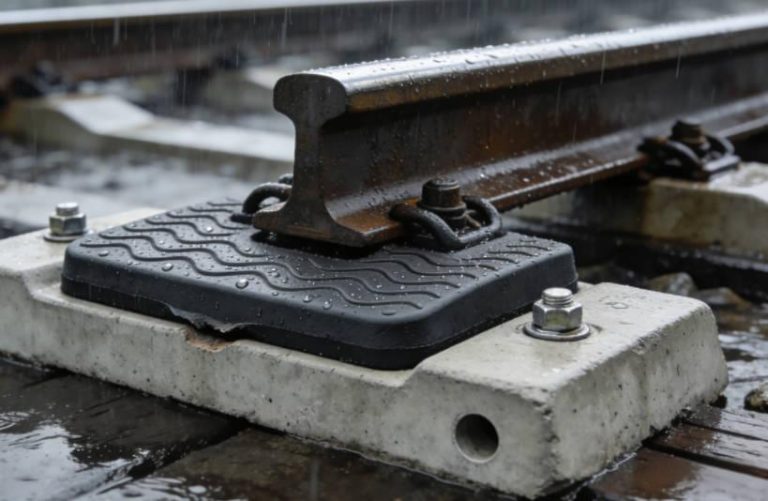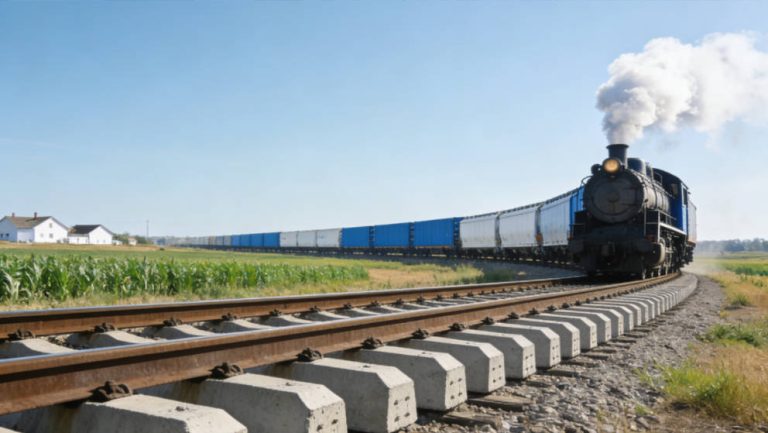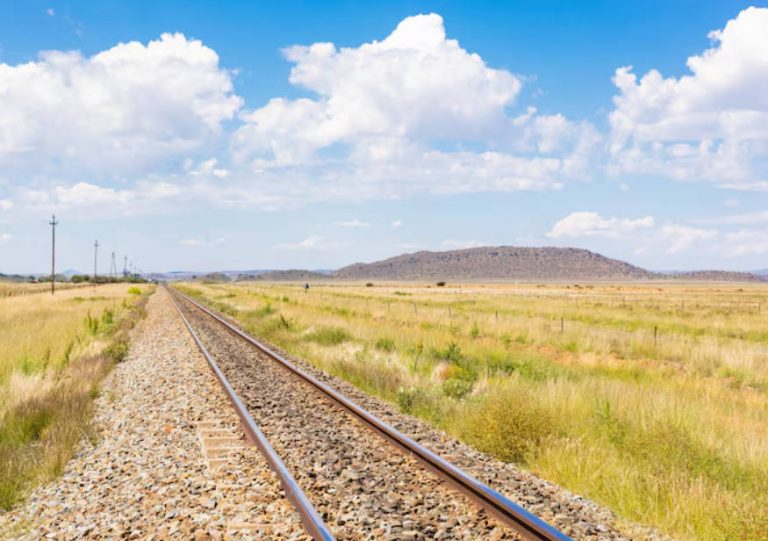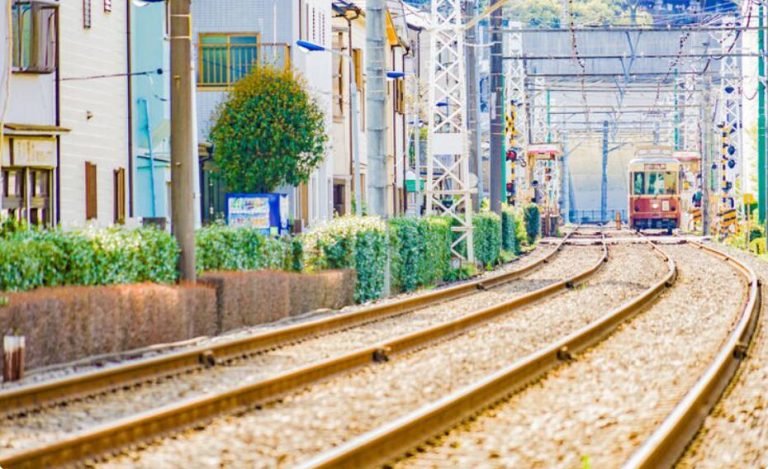Rail systems carry people and goods across cities and countries. They’re efficient and eco-friendly. But they can be noisy and shaky. This bothers passengers, nearby residents, and the tracks themselves. Insulation buffer pads solve these problems. They cut down rail noise reduction and dampen shakes.
This article explains how insulation buffer pads, like those from SAFE, boost acoustic performance, make tracks last longer, and improve rides for everyone.
What Causes Noise and Shakes in Rail Systems?
Trains make noise and vibrations when they move. These come from a few places:
- Wheels on Rails: Wheels hitting rails create shakes. These spread through tracks and nearby areas.
- Track Issues: Bumpy or uneven tracks make vibrations worse. This leads to loud sounds.
- Nearby Communities: Shakes can rattle buildings. Noise can disturb people living close by.
If not controlled, these problems hurt passenger comfort, wear out tracks faster, and raise repair costs. Insulation buffer pads help by soaking up shakes and quieting noise. They make rail systems smoother and calmer.
Why Noise and Shakes Are a Big Deal
Loud sounds and vibrations cause trouble:
- Passenger Comfort: Shakes make rides bumpy. Noise makes it hard to talk or rest.
- Track Wear: Vibrations stress rails and parts. This means more repairs.
- Community Concerns: Loud trains annoy people nearby. This can lead to complaints or rules.
Using strong vibration damping pads fixes these issues. They keep passengers happy and tracks in good shape.
How Insulation Buffer Pads Help with Rail Noise Reduction
Insulation buffer pads are special parts that soak up shakes and quiet noise. They’re usually made from tough polymer materials, like rubber or plastic. These pads sit between rails and supports, acting like a soft cushion. Here’s what they do:
- Shake Soaking: They catch and spread out shaking energy. This stops it from moving through tracks.
- Noise Cutting: By calming shakes, the pads lower train noise.
- Track Saving: They ease stress on rail parts, helping them last longer.
Products like the Height Adjustment Pad and Insulation Buffer Pad from SAFE are built for tough rail jobs. They work well in all kinds of conditions.
How Do These Pads Work?
The pads work because of their materials and design. They use polymer materials that are stretchy and strong. Here’s how they help:
- Energy Spreading: When a train rolls by, the pads catch shaking energy. They spread it out so it doesn’t harm tracks.
- Sound Lowering: The pads stop sound waves from spreading. This makes trains quieter.
- Weight Sharing: They spread the train’s weight evenly. This protects rails from extra wear.
These features make insulation buffer pads key for rail noise reduction and better rail systems.
Benefits of Using Insulation Buffer Pads
Adding insulation buffer pads to rails brings many perks. They improve rides, save money, and help the environment. Here’s a table showing the main insulation buffer pad benefits:
| Perk | What It Does |
| Rail Noise Reduction | Cuts down loud sounds. Makes rides and nearby areas quieter. |
| Vibration Damping | Soaks up shakes. Protects tracks from damage. |
| Longer Track Life | Saves rails and parts from wear. Cuts repair costs. |
| Better Passenger Rides | Makes trips smooth and quiet. Passengers feel more comfortable. |
| Eco-Friendly | Helps meet noise and shake rules. Protects communities. |
Making Passengers Happier
Passengers want smooth, quiet rides. Insulation buffer pads reduce bumps and noise. This makes trips more enjoyable. It’s especially important for fast trains or city metros, where people expect comfort.
Keeping Tracks Stronger for Longer
Rail systems cost a lot to build. Keeping them in good shape saves money. Vibration damping pads lower stress on rails and parts. This means fewer fixes and replacements. It keeps costs down for rail companies.
Helping the Environment
Besides better rides and stronger tracks, insulation buffer pads are good for the planet. They cut noise pollution. This helps rail companies follow environmental rules. It also keeps nearby residents happier.
SAFE: A Top Maker of Rail Parts
SAFE is a well-known company in the rail world. They make high-quality rail fastening systems and parts, including insulation buffer pads and height adjustment pads. SAFE focuses on new ideas and careful work. Their polymer materials and smart designs ensure great vibration absorption and acoustic performance. Rail companies worldwide trust SAFE for reliable products.
Picking the Right Insulation Buffer Pad
Choosing the best insulation buffer pad depends on a few things. You need to think about train types, track conditions, and rules. Here’s what to consider:
- Material Strength: Pick pads made from tough polymer materials. They should handle heavy trains and bad weather.
- Weight Support: Make sure the pad can take the train’s weight and frequent use.
- Sound Control: Choose pads that are good at rail noise reduction, especially in cities.
- Fit with Tracks: Check that the pad works with your rail system.
SAFE’s Height Adjustment Pad and Insulation Buffer Pad are made to meet these needs. They work for many rail setups.
FAQs About Insulation Buffer Pads
What is an insulation buffer pad?
An insulation buffer pad is a part placed between a rail and its support. It soaks up shakes and cuts noise in rail systems. This helps with rail noise reduction and protects tracks.
How do insulation buffer pads help with rail noise reduction?
These pads catch shaking energy. They stop it from making loud sounds. Their vibration damping ability keeps trains quieter.
Can vibration damping pads make tracks last longer?
Yes. Vibration damping pads lower stress on rails and parts. This helps them last longer and cuts repair costs.
What are insulation buffer pads made of?
They’re made from polymer materials, like rubber or plastic. These are stretchy, strong, and great at vibration absorption.
Are insulation buffer pads good for fast trains?
Yes. These pads are built for heavy and fast trains. They ensure rail noise reduction and keep passengers comfortable.
Discover Better Rail Solutions Now
Noise and shakes are big problems for rail systems. But they don’t have to ruin rides or break tracks. Insulation buffer pads offer strong rail noise reduction and vibration damping. They make tracks last longer and trips more enjoyable. Check out SAFE’s rail products to find smart solutions. Improve your rail system’s performance and comfort today.






